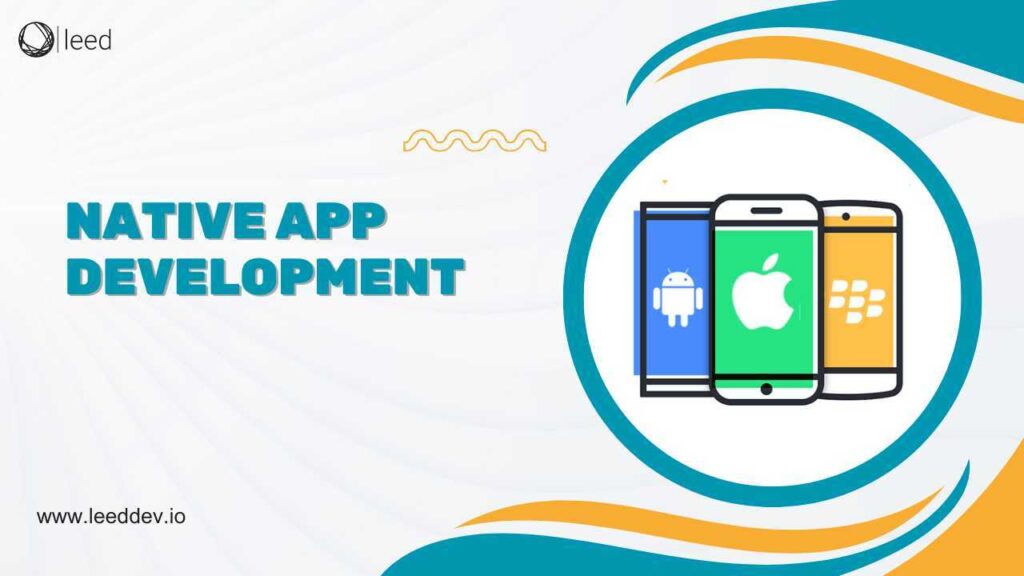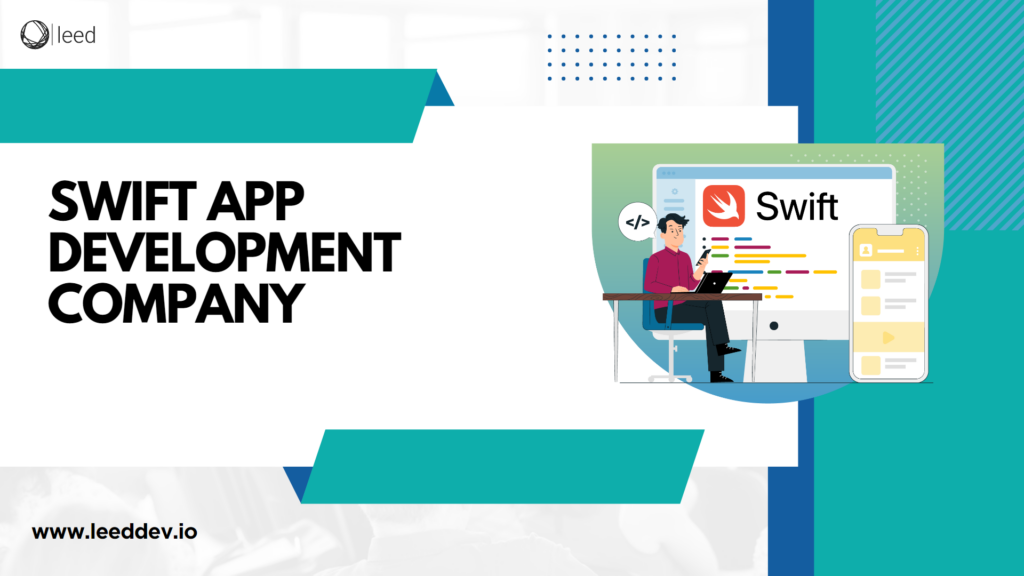Get ready to step into a world of intuitive design and unrivalled performance with native app development expertise. In the recent decade, the use of mobile phones has become common. Approximately, there are about 6.5 billion mobile users worldwide. This is why developers create the best user experience apps for smartphones.
In the year 2022, about 35.3 billion apps were downloaded by users on the Apple Store and Google Play store. Basically, there are two main ways of developing mobile apps:
- Native App Development- For specific operating system
- Cross Platform Development- For multiple operating systems
What is Native App Development?
Native App Development means developing a mobile application that is designed specifically for specified platforms like iOS and Android. As compared to websites that run on the web browser, native mobile apps need to be downloaded directly from the app store. Native mobile applications are built for specific platforms, so they provide high user engagement compared to hybrid apps. These apps also provide better performance and increased compatibility.
Examples of Native App Development
Some of the examples of Native App Development are as follows:
- Whatsapp: A native software created for iPhone and Android users with more than 140 million downloads in the year 2020. Users can make voice and video calls, and a conference call option is also available.
- Spotify: A digital music service hub that allows users to listen to their favourite music. It also allows the users to create a library where they can keep their downloaded tunes and podcasts.
- Waze: Waze is a GPS navigation app which gives users turn by turn directions and also gives information regarding their route. The app is free and can be easily downloaded from the online stores.
- Tesla: Tesla is another example of native application development that can be installed on smartphones. The app is available on both Apple and Play Store for users to easily download.
- SoundCloud: Another example of native mobile app development is SoundCloud, which allows users to listen to their favourite music. You can also share music with your friends or colleagues.
Difference Between Native & Cross Platform Development
The given table will clearly explain the differences between Native App and Cross Platform Development:
| Aspects | Native Development | Cross-Platform Development |
| Development Languages | Platform-specific (Swift, Java, Kotlin) | Universal (JavaScript, Dart) |
| Performance | Optimal, directly uses platform features | Slightly lower due to the abstraction layer |
| Development Time | Longer (separate codebases) | Shorter (code-sharing across platforms) |
| Maintenance | Requires separate maintenance | Easier due to shared codebase |
| Access to Features | Full access to device features | Access to many native features, but not all |
| Cost | Higher development costs | Lower development costs |
Native App Development for Android
For Native Android App Development, you can use languages like Java, Kotlin, and C++. Following are some of the important Native Android App Development tools:
- The SDK kit, which also has Android studio
- Command-line tools available for Windows, Mac, and LinuxFf
- Firebase which is a comprehensive mobile app development platform
- Android Jetpack is a collection of pre-made Android components.
Native App Development for iOS
For native iOS app development, a Mac computer is required. The languages used for iOS native app development are Objective C and Swift. Several development tools are offered by Apple, which includes:
- iOS SDK
- XCode
- Swift Playgrounds
- TestFlight
Advantages and Disadvantages
Following are some of the advantages and disadvantages of Native App development:
Advantages
Some of the advantages of native application development are given below:
- Better performance
- Increased security
- More interactive and intuitive
- Full feature set access
- Better store support
- Minimal bugs
- Interactive UX
- Increased scalability
Disadvantages
The disadvantages of native application development are as follows:
- Costly to deploy
- Requires more development time
- Native application development is a time consuming process
- App updates are necessary to download
- Lack of code reusability
Best Native App Development Frameworks of 2023
Some of the best Native app development frameworks of 2023 are as follows:
Flutter
Flutter is an open source framework that is used for Android and iOS development. A single code base is used in Flutter. The framework contains different widgets, a rendering engine and different resources that can help developers build intuitive apps. Some of the features of the Flutter platform are as follows:
- Developers can easily make changes in the app and can see them reflected in the app.
- Flutter allows users to create highly customised user interfaces.
- Provides visuals that are engaging as well as appealing
- Developers have direct access to native APIs
- Rapid Advancement
Xamarin
Xamarin is an application development framework that is used to develop highly native mobile apps for iOS and Android. The programming languages used by Xamarin are .NET and C#. Xamarin is owned by Microsoft and allows developers to create a single, shared UI codebase for multiple platforms. Some of the features of Xamarin are as follows:
- Compatibility with a variety of devices
- Fully integrated with Microsoft Visual Studio
- Native App Developers can write code in C# and can create apps which run on multiple platforms.
- Developers have the direct access to native APIs
- Rapid Advancement
Ionic
An open source framework that is used for creating progressive web apps, hybrid and cross platform apps. The framework is built with Apache Cordova and Angular, which helps developers build apps for Android and iOS easily. Ionic allows developers to employ different UI components in the app framework easily. Some of the features of Ionic are as follows:
- Offers a library of pre-designed UI components, themes, and layouts
- In Ionic, the user interface is consistent.
- Enhance performance
- Provides a command line interface tool to users, which simplifies the app development process
- Provides flexibility to users.
- Features smooth integration with Angular
Native Script
Native Script is an open source framework through which developers can reduce the time and code of app loads. The framework was developed by Progress Telerik. Native Script allows programmers to develop apps which are Vue.js, Typescript, CSS, Javascript, and Angular enabled. The features of Native Script are given below:
- Offers single codebase for both iOS and Android
- Programmers have direct access to native APIs and device features.
- Developers can write code once using JavaScript or TypeScript, which can then be deployed across iOS and Android platforms.
- Allows seamless integration with Angular and Vue.js frameworks.
Swiftic
Swiftic is one of the best native app development frameworks for Android and iOS. The software is best for small businesses and has helped to build more than 1,00,000 apps since 2010. Users can create unique applications with Swiftic, allowing developers to integrate data from the internet easily. Features of Swiftic are as follows:
- A do it yourself mobile app platform.
- Features a variety of templates for different apps.
- Users can use the preview feature to have a look at their app.
- Allows strong integration with other parties
- Users can easily manage their app content, update information and add new features as well.
- Easy navigation and integration
Which is Better Native or Cross Platform?
During the mobile app development project, choosing between native app development or cross platform development is crucial. Well, the answer depends on various factors. The most important factor is the operating system for which you are developing the app. If you specifically want to build an app for Android or iOS, then you need to choose Native App development. However, if you want to target a large audience, then it’s better to choose cross platform development. Native apps offer better performance and optimal user experience, whereas cross platform delivers a cost effective approach. If you want an app with increased security and multiple features, the native approach is better. But if you are worried about speed and cost, then you need to choose a cross platform approach.
How Can We Help You?
Leed Software Development
Leed Software Development is one of the best native app development companies. The company is focused on providing a range of services to their clients. Some of the main services provided by Leed Software Development include:
- Web and Mobile App Development Services
- Enterprise Application Development
- Project Management Service
- DevOps
- Blockchain Development Services
- Artificial Intelligence App Development
- SEO Services
- Business Auditing Services
The given table will give you a more clear idea about the company:
| Company Name | Founded In | Budget | Rate Per Hour | Headquarters | No of Employees | Additional Information |
| Leed Software Development | 2020 | $30000 -$50000 | $30 – $50 | Canada, Germany, and Pakistan | 50 – 100 | Develops responsive apps for their target audience using the latest technologies, tools and programming languages |
Conclusion
To conclude, 2022 was marked by 35.3 billion app downloads between Apple Store and Google Play stores alone, which highlights two primary approaches for mobile app development: Native Development and Cross-Platform Development. Native app development for platforms such as iOS and Android offers superior user engagement, performance and compatibility – such as WhatsApp, Spotify or Waze – making for superior experiences for end-users. Notable examples include WhatsApp, Spotify or Waze. The top platforms for native application development are Flutter, Xamarin, Ionic and Native Script. Leed Software Development stands out as a provider of the finest native mobile app development services. So, contact us today and build the most impressive and engaging apps!



